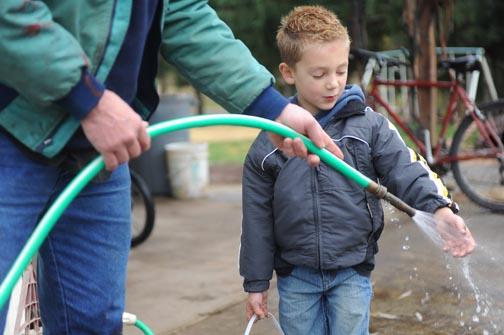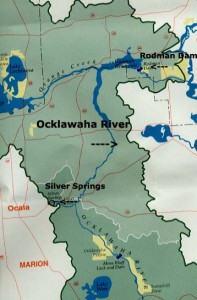The week that was, 11/15-21/2009
Posted on | November 22, 2009 | 2 Comments
“It is the court’s opinion that the negligence of the corps, in this instance by failing to maintain the MR-GO properly, was not policy, but insouciance, myopia and shortsightedness.” — Federal District Court Judge Stanwood R Duval, Jr on the US Army Corps of Engineers’ management of the Mississippi River Gulf Outlet, aka “Mister Go,” in advance of Hurricane Katrina, New York Times, November 19, 2009
— Federal District Court Judge Stanwood R Duval, Jr on the US Army Corps of Engineers’ management of the Mississippi River Gulf Outlet, aka “Mister Go,” in advance of Hurricane Katrina, New York Times, November 19, 2009
In the 24 hours up to 12.45am yesterday, the Environment Agency recorded rainfall of 314.4mm (12.3in) in the area, thought to be an all-time record for England. — “Cumbria floods: ‘Once in a thousand years’ deluge swamps defenses,” Daily Telegraph, November 21, 2009
Sacramento supports the Delta as long as we don’t have to do anything to make it better. — Phil Isenberg, former Sacramento mayor and chairman of the Delta Vision Blue Ribbon Task Force, opinion piece “Delta fix demands sacrifices from all,” Sacramento Bee, November 18, 2009
There is an old saying in limnology (the science of features and properties of fresh waters) that “lakes are born to die” and it is because of the inherent nature of the beast. — from an op-ed by Harold T Sansing, retired chief of water quality, US Army Corps of Engineers, Nashville, “If Rodman Dam were taken out, environment jobs would flourish,” Ocala Star-Banner, November 15, 2009
Four major volcanic lakes including Batur in Bangli regency, and [Lake Buyan], Beratan and Tamblingan in Tabanan regency, are experiencing serious sedimentation problems. — “Bali warned of clean water crisis,” Jakarta Post, November 20, 2009

Ivan Gammel washes off dirt from the hand of his grandson, Reece, at his home in Vader. Gammel said that water delivery to his home fails regularly. Photo: Brandon Swanson, Centralia Chronicle
“The community’s aging water lines break frequently, and there are so many leaks they lose about 40 percent of their water.” — Clark Halvorson, manager of southwest regional operations, Office of Drinking Water, Washington State Department of Health, “Vader put under boil water order,” Centralia Chronicle, November 20, 2009
The chemicals that the Center for Biological Diversity listed as being present in the [Las Vegas] wash, bay, lake [Mead] … include several pesticides banned decades ago but which persist in the ecosystem, caffeine, byproducts of pharmaceuticals and nicotine, selenium, and byproducts of industrial paint, perfumes and household cleaners. — “Group seeks ‘imperiled’ status for Southern Nevada Waterways,” Las Vegas Sun, November 16, 2009
For nearly three decades, scientists have struggled to figure out exactly how arsenic was getting into the drinking water of millions of people in rural Bangladesh. The culprit, the new study says, are tens of thousands of man-made ponds excavated to provide soil for flood protection. — “Mass-poisoning mystery solved,” the Montreal Gazette, November 16, 2009
“People compare water to oil. It’s more like blood, because where there’s no water, there’s no life.” — Alice Darnell, president, Lost Pines Groundwater Conservation District, “River Authority looks east for groundwater to serve new development,” Austin American Statesman, November 18, 2009
“People want it.” — Peter Rodriguez, community and government relations manager for the Upper San Gabriel Valley Municipal Water District, “Purple pipes bring more recycled sewage water to Rosemead,” Whittier Daily News, November 16, 2009
Comments
2 Responses to “The week that was, 11/15-21/2009”
Leave a Reply





December 6th, 2009 @ 3:40 pm
Have you a reference for “lakes are born to die”? I’m using it in a to-be-published report on Lake Bonneville and need a source for the quotation.
Keep up the good work!
June 1st, 2010 @ 6:34 pm
Safe drinking water advocates blast Washington state cities for not providing residents options to purchase water line insurance
A recently published report in Washington state is critical of several municipalities for not providing insurance options to help residents repair or replace broken water lines or sewer lines
Seattle, Wash. – The Washington State Access to Safe Drinking Water Council (WSASDWC) has recently published a report which is highly critical of municipalities in Washington State for not providing residents options to purchase water or sewer line insurance. The WSASDWC report gave several communities an “F” for failing to carry any insurance products that would help residents insure their water and sewer lines for breaks or leaks. Specifically in the study, Seattle, Tacoma, Yakima, Spokane, Pasco, Bellevue, Vancouver, Everett, Wenatchee and Kennewick received the worst scores.
The WSASDWC was particularly critical of the City of Kennewick after a local news station aired the following reports which detailed how the Benton County Public Utility District and other municipal entities (i.e…City of Kennewick) would not fix a broken water pipe despite the fact Benton PUD broke the pipe. The residents in Kennewick were left without adequate drinking water supplies for several days.
• http://www.keprtv.com/news/local/91664144.html;
• http://www.keprtv.com/news/91001969.html.
According to data in the study collected from public works departments, about 50,000 property owners a year in Washington state face repair or replacement bills for busted or broken water and/or sewer lines that range from $1,500 to $6,000. Additionally, most water and/or sewer lines were installed between 1900 to 1970 in Washington state and are over 40 years old.
As cities and communities age across Washington State and the United States the probability of leaks from older water pipes and related infrastructure will increase dramatically, which will put additional financial pressure on homeowners to fix and replace water pipes.
• http://environmentalism.suite101.com/article.cfm/fragile-water-infrastructure-in-the-us;
• http://www.buffalonews.com/2009/11/30/877764/aging-water-lines-put-pressure.html.
“If cities in Washington state are not going to repair or take responsibility for water and sewer lines from the street or meter to the residence, then they need to provide residents private sector insurance options so situations like the one in Kennewick do not occur in the future,” said Dan Miller, Director of Advocacy of the WSASDWC. “It is inexcusable that so many Washington state cities are not offering insurance or warranty products to help homeowners fix leaks in private water or sewer lines, and to minimize disruptions in access to clean drinking water.”